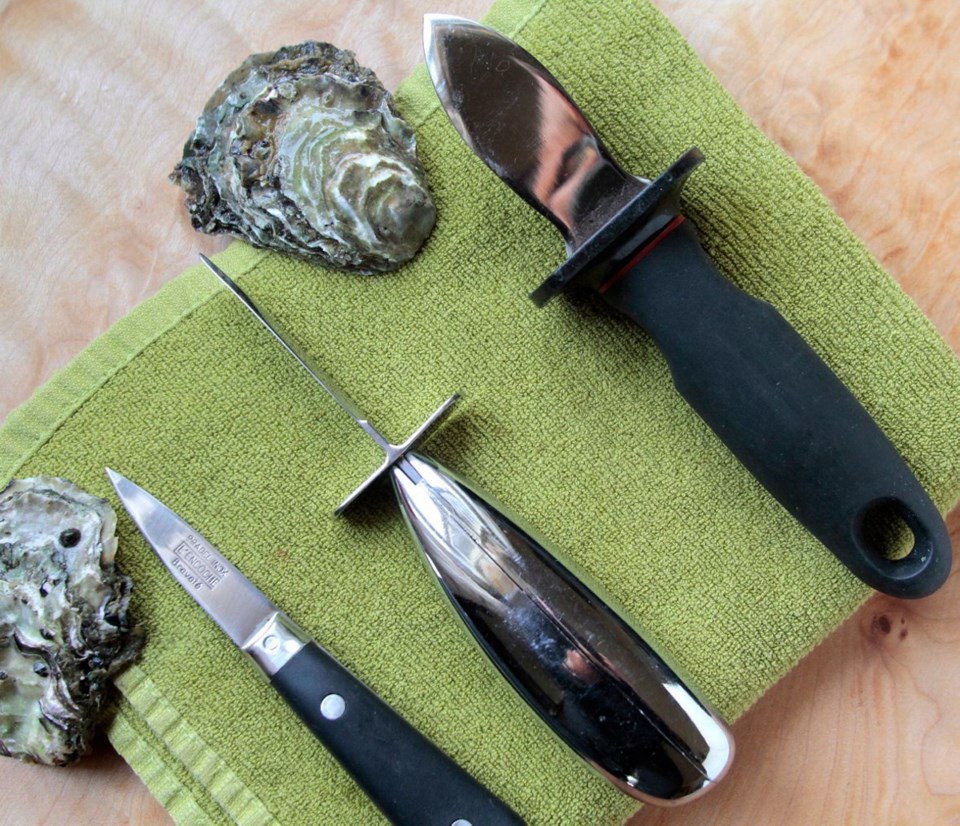If he was a brave man who first ate an oyster (Samuel Johnson), he was a braver one still who ate a raw B.C. oyster these past few days. The Canadian Food Inspection Agency has issued a Canada-wide warning about B.C. oysters. Like much else we suffer at the hands of a too-distant federal bureaucracy, this is the equivalent of a drive-by shooting.
There are indeed some infected oysters on our coast. In summer months, vibrio bacteria often bloom.
They’re present in seawater all year round, usually in quantities too small to cause a health problem. But with the unusually warm weather we’ve been having, B.C. has seen a significant uptick that is earlier and larger than usual. (This is the origin of the ancient warning about only eating oysters in months with the letter r.)
If oysters with vibrio are cooked, there’s no danger. Eaten raw, however, a risk of infection does exist.
The bug can cause gastro-intestinal symptoms — cramps, bloating, diarrhea — which usually clear up on their own within a few days. Most physicians advise simply waiting out the discomfort, unless the patient has other health conditions that complicate matters.
However, with about 30 cases of vibrio infection reported on the Lower Mainland to date, 15 on Vancouver Island and close to 60 for the province as a whole, clearly some action was required. Vancouver Coastal Health Authority has told restaurants to stop serving raw oysters. And eateries on the Island have been asked to display signs, warning customers about the risks associated with eating raw oysters.
Why, then, is this a drive-by shooting? Well, it’s a safe bet that many commercial oyster farms on the coast (and there are several score) don’t have a problem with vibrio.
So long as the shellfish are kept in deeper water, where temperatures are lower, they should be safe. Many producers take this precaution.
But the CFIA doesn’t inspect each farm, and the tests it does perform aren’t necessarily reliable. There can be cross-contamination between batches, statistically underweighted samples, and so on.
Basically, all the agency can say is that a certain percentage of B.C. oysters are contaminated. It lacks the necessary resources to tell us what we really need to know — which farms did the unsafe oysters come from?
The result is that an entire industry, worth more than $32 million in annual sales, has been unfairly slagged. And bans like these have a lasting impact on consumer confidence.
Even after the health advisory is lifted, the after-effects will likely drag on. Stores and restaurants will find alternative locations to buy from —P.E.I., for example, or Washington state. Diners will shift to other forms of seafood —mussels perhaps, or clams.
The extent of the CFIA’s amateurism is evident on its website.
The warning it posted refers to oysters harvested on or before Aug. 18. Well, today is Aug. 21. Has the advisory been lifted? Who knows? Certainly not the CFIA.
This is simply not good enough. At a minimum, it is the duty of public health agencies to keep their bans and warnings up to date.
But it’s a scandal that an entire industry has been disrupted, and quite possibly harmed indefinitely, because the federal government doesn’t take its responsibilities seriously.
I’m no fan of shifting burdens between different levels of government, when one of them comes up short. But this might be an occasion where the province should step in, temporarily at least.
With about three guys and a wheelbarrow, it should be possible to fix this mess overnight. Identify the infected farms, sink their oysters in deeper water and hire a few labs to do hurry-up tests.
You’d think even Ottawa could manage that.



